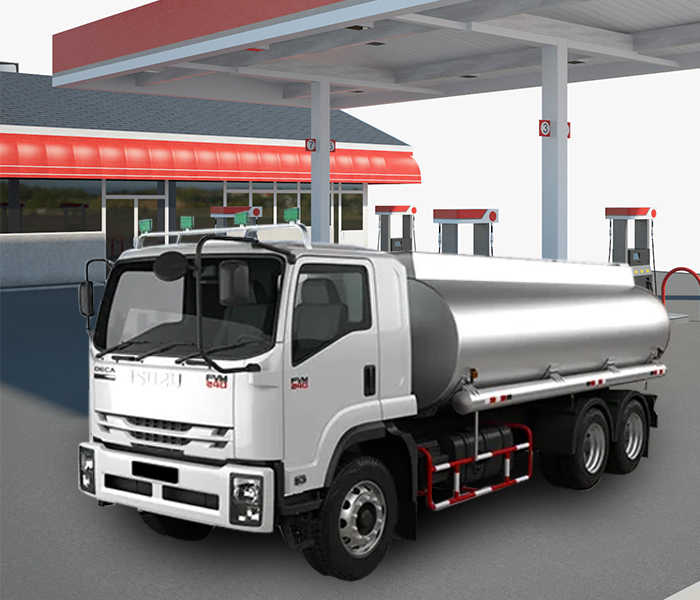Hydraulic systems are the backbone of many ISUZU trucks, powering essential functions such as lifting, dumping, and steering. These systems are designed to deliver reliable performance under demanding conditions, but like any mechanical component, they can encounter issues over time. Understanding how ISUZU truck hydraulics work and knowing how to address common problems can help operators maintain efficiency, reduce downtime, and extend the lifespan of their vehicles. This guide explores the fundamentals of ISUZU truck hydraulics, identifies frequent issues, and provides practical solutions to keep these systems running smoothly.
1. The Role of Hydraulics in ISUZU Trucks
Hydraulic systems in ISUZU trucks are integral to their functionality, enabling tasks that require significant force and precision. From dump trucks lifting heavy loads to mixer trucks operating their drums, hydraulics play a critical role in ensuring smooth and efficient operations. These systems rely on pressurized fluid to transmit power, making them highly effective for heavy-duty applications.
Key components of ISUZU truck hydraulics include:
- Hydraulic Pump: Generates the necessary pressure to move fluid through the system.
- Cylinders and Actuators: Convert hydraulic energy into mechanical motion, enabling lifting, tilting, or other movements.
- Control Valves: Regulate the flow and direction of hydraulic fluid, ensuring precise operation.
- Hydraulic Fluid: Acts as the medium for transmitting power while also lubricating and cooling the system.
By understanding these components, operators can better appreciate how their ISUZU trucks function and identify potential issues before they escalate.
2. Common Hydraulic System Issues and Their Causes
Despite their durability, hydraulic systems in ISUZU trucks can experience problems due to wear, contamination, or improper maintenance. Recognizing these issues early is crucial for preventing costly repairs and downtime.
- Fluid Leaks: Leaks are one of the most common hydraulic problems, often caused by worn seals, damaged hoses, or loose fittings. They can lead to reduced system efficiency and potential damage to other components.
- Overheating: Excessive heat can degrade hydraulic fluid and damage seals, often resulting from overuse, insufficient cooling, or fluid contamination.
- Slow or Weak Operation: If the hydraulic system operates sluggishly, it may be due to low fluid levels, a failing pump, or clogged filters.
- Unusual Noises: Knocking or whining sounds can indicate air in the system, cavitation, or worn-out components.
By addressing these issues promptly, operators can maintain the performance and reliability of their ISUZU trucks.
3. Preventive Maintenance for Hydraulic Systems
Regular maintenance is the best way to prevent hydraulic system issues and ensure long-term performance. Implementing a proactive maintenance routine can save time and money while minimizing the risk of unexpected breakdowns.
Key maintenance tasks include:
- Fluid Checks and Changes: Regularly inspect hydraulic fluid levels and quality. Replace the fluid as recommended by the manufacturer to prevent contamination and degradation.
- Filter Replacement: Clean or replace hydraulic filters to ensure proper fluid flow and prevent debris from entering the system.
- Seal and Hose Inspections: Check seals and hoses for signs of wear, cracks, or leaks, and replace them as needed.
- System Flushing: Periodically flush the hydraulic system to remove contaminants and maintain optimal performance.
By adhering to these practices, operators can keep their ISUZU truck hydraulics in top condition and avoid common problems.
4. Troubleshooting and Repairing Hydraulic Issues
When hydraulic problems arise, knowing how to troubleshoot and address them can make all the difference. Here are some steps to diagnose and resolve common issues:
- Fluid Leaks: Identify the source of the leak by inspecting hoses, fittings, and seals. Tighten loose connections or replace damaged components as necessary.
- Overheating: Check fluid levels and ensure the cooling system is functioning properly. Clean any debris from the radiator or cooler and replace contaminated fluid.
- Slow Operation: Inspect the hydraulic pump and filters for blockages or wear. Top off fluid levels or replace the pump if needed.
- Unusual Noises: Bleed air from the system by cycling the hydraulic controls. If the noise persists, inspect the pump and valves for damage or cavitation.
For complex issues, it’s advisable to consult a certified technician or ISUZU service center to ensure proper repairs and avoid further damage.
5. Leveraging ISUZU’s Expertise for Hydraulic System Care
ISUZU is committed to supporting its customers with comprehensive resources and services to maintain their vehicles. From detailed maintenance manuals to access to certified technicians, ISUZU provides the tools needed to keep hydraulic systems operating at their best.
For operators of other ISUZU vehicles, such as dump trucks or mixer trucks, the same principles of hydraulic system care apply. By leveraging ISUZU’s expertise and support, businesses can ensure their entire fleet remains reliable and efficient.
Understanding and addressing common hydraulic issues is essential for maintaining the performance and longevity of ISUZU trucks. By implementing preventive maintenance, troubleshooting problems promptly, and leveraging ISUZU’s support, operators can keep their hydraulic systems running smoothly and ensure their vehicles remain dependable partners in their operations.

Have hired a truck with hydraulic lift and there has been no hand control provided. Can you use manual thing underneath.